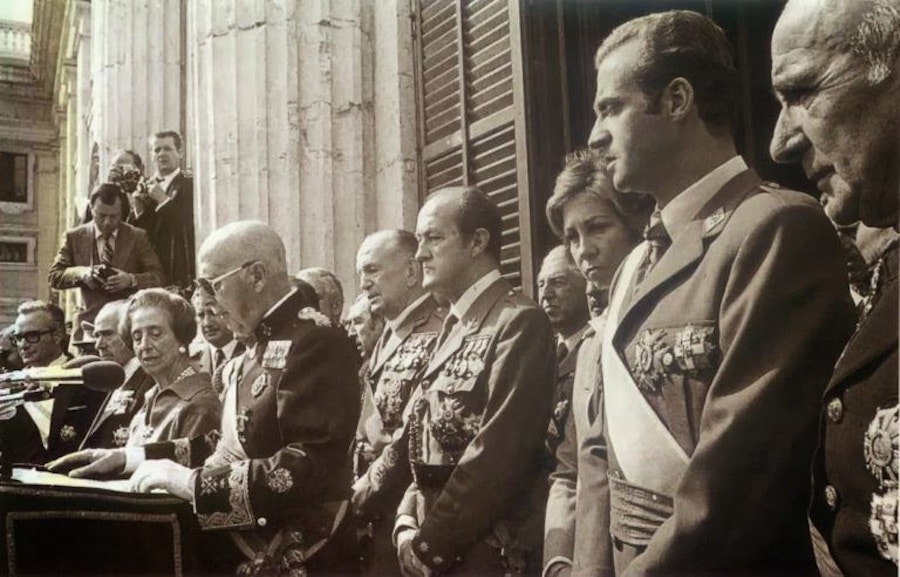This article was translated by John R. Bopp
Stewart Reddin is a member of the Irish Stoneybatter & Smithfield People’s History Project, as well as being an active member of the Gernika 80 Committee, which organized a memorial for the 80th anniversary of the Bombing of Guernica in Dublin. We blogged about him then for his commitment to sharing that dark moment in Basque history. It was also this committee which published an article in The Irish Times about the story of Jack Prendergast, the Irish Republican who joined the gudaris in their fight against fascism.
So, it should be quite obvious that Mr. Reddin is profoundly interesting in the history or our country, especially its recent past, as shown by his two published works: Massacre in Gasteiz: The Basque Country’s Bloody Sunday and Gernika 80 Then & Now — 80 Years of Basque-Irish anti-fascist struggles.
Keeping alive that tradition of studying and sharing our nation’s recent past, starting in November, he’s published an extensive article in Medium about the annus horribilis of 1975. It was the last year the dictator Franco was live, and he and his illegal, corrupt, and murderous régime sounded their death rattles by “giving” the Basques a terrible year, when tragic events, violence, and repression were the true protagonists of the time.
This was nothing more than the natural continuation of what that dictatorship meant for all those who weren’t “one of them”. His military insurrection, savage murders during the whole Civil War (even in places far from the front), brutal repression after the war’s end, and the reign of terror that lasted until even after his death are just different facets of the core of Francoism: inhumaneness, violence, and absolute illegitimacy.
In that terrible year, tragic events unfolded one after the other until reaching their zenith in September. On the 27th of that month, the régime’s final firing squad deaths took place. On that day, Juan “Txiki” Paredes Manot and Ángel Otaegui, members of the Political-Military ETA, and José Humbert Baena, José Luis Sánchez Bravo, and Ramón García Sanz, members of the Anti-Fascist and Patriotic Revolutionary Front (FRAP) were assassinated. They were shot to death just two months before the dictator himself died; indeed, he gave his final public appearance just a few days after these murders. Thanks to the international reaction to these executions, on October 1, the dictator appeared for the last time on the East Palace balcony to bathe in the cheering of his many followers, and to once again accuse all of “his Spain’s” problems on a “leftist masonic plot”.
Unfortunately, the repression, the oppression, and the violence didn’t end with the dictator’s death. Neither did his régime.
Mr. Reddin gives us a chronicle of that terrible year, telling us how the dictatorship didn’t hesitate to use all the weapons at its disposal (including the illegal ones, as the whole régime itself was illegal) to keep Basque society, and indeed Spanish society, from moving forward in its desire for achieving freedom.
This year, as we’re going through extraordinary events like those in Catalonia, it’s good to remember what happened when the Spanish State (then the Franco régime and today the Kingdom of Spain) decides to turn a deaf ear to the demands of the citizens of a nation, and how the imposition of concepts such as “reason for being” or the “indivisible unity of Spain” can give rise to such basic principles as democracy, the respect for the will of the citizens and peoples, or indeed civil and human rights losing their importance.
Of course one cannot expect dialogue, negotiations, or a willingness to reach an agreement from a dictatorial or non-democratic state. We learned (from shedding much blood and tears) that none of the above could be expected from the institutions of Francoism or its defenders. In the next few months, we’ll see what can be expected of the institutions of the Kingdom of Spain, the Régime of ‘78, and its defenders.
Medium – 1/11/2017 – USA
Internment, Torture, Executions: The Basque Country in the dying days of the Franco dictatorship
The forty year reign of Spanish dictator General Francisco Franco came to an end with his death in November 1975. In his final year Franco oversaw a brutally enforced state of emergency in two provinces of the Basque Country during which thousands were detained without trial and systematically tortured, the Basque public was terrorised by the official armed forces of the state and its proxy gangs, and the media was heavily censored.
(Continue)


Last Updated on Dec 20, 2020 by About Basque Country




























